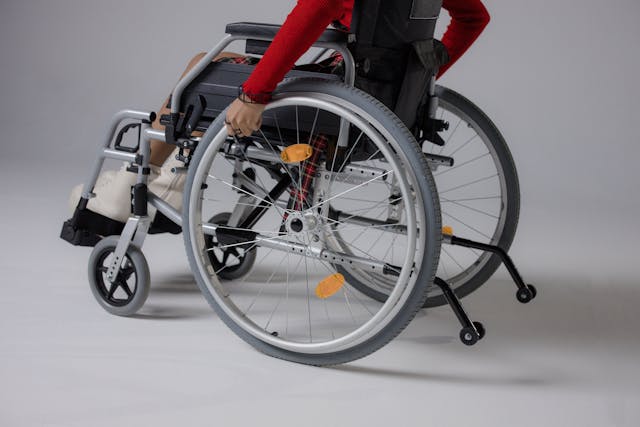
Choosing the right wheelchair for your child can be tough, as there are a million wheelchairs for kids available and each manufacturer is going to tell you that their model is the best. What makes this even more difficult is that one wheelchair isn’t going to be ideal in all situations. A wheelchair may be great for getting around a classroom, but that same chair won’t be ideal for negotiating a muddy sports field or the soft sand at the beach.
This article will give you an idea on what options are available and their various benefits and drawbacks. Its not meant to provide a pathway for you to go out and seek the perfect wheelchair for your child, more to give you a better understanding of the wheelchair market and allow you to make better, more informed choices. You’ll also be able to ask more questions of the person prescribing the wheelchair, whether that be the NHS wheelchair service or a retailer.
Every NHS wheelchair service will have specific criteria for them to provide your child with equipment. There are typically a certain number of hours or days the wheelchair needs to be used for, and whether it is for inside and/or outside use. Most services will only provide for permanent disabilities, rather than a specific short-term need.
If you choose to purchase your own wheelchair, choose a retailer that has experience selling the type of wheelchair you’re looking for – don’t let your child become their guinea pig! They should be able to show you a range of options and take into account the specific nature of your child’s ability.
There are also charities who may be able to provide financial assistance for the purchase of a wheelchair. Each charity tends to have a certain target market and cover a specific geographical area. Get in touch if you’d like to know more.
Manual Transit Wheelchairs for Kids
In most cases, these are the most basic of wheelchairs. The small wheels at the back enable you to push your child, however they will not be able to self-propel (or push) themselves. Most transit wheelchairs will fold, so they can be stored easily in the boot of any car. Cushions and other products can be added for comfort, pressure relief or to provide positioning.
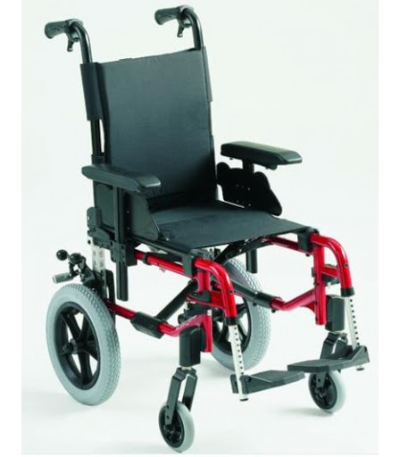
Manual Self-Propelling Kid’s Wheelchairs
Self-propelling wheelchairs are designed to give your child the opportunity to independently self-propel. The rear wheels are large enough so they can be reached easily. Self-propelling isn’t easy though and a lot of kids will not have the strength or coordination to mobilise everywhere themselves. Its hard work and little arms just aren’t built for it! The large wheels aren’t just for self-propelling, they also make the wheelchair easier to push than a transit wheelchair, especially over rougher ground. The larger wheels roll over bumps much more easily. Most self-propelling wheelchairs can be stored easily in the boot of any car. Cushions and other products can be added for comfort, pressure relief or to provide positioning.
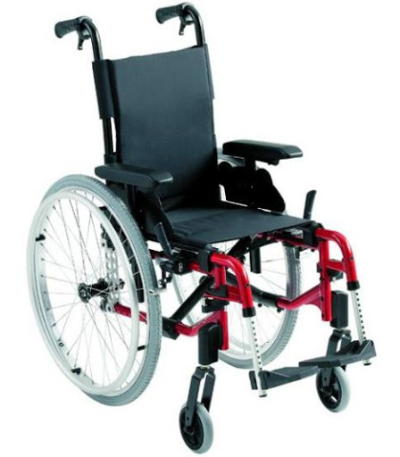
Active User Self-Propelling Kid’s Wheelchairs
These are still considered self-propelling wheelchairs, but they are easier to self-propel than the more standard self-propelling wheelchairs described above. Being easier to self-propel is achieved through two differences – they’re normally lighter in weight, and they have a lot of adjustment available so that an efficient position and weight distribution for self-propelling can be achieved. The most important adjustment is rear wheel position – moving the rear wheel forward on the frame makes the chair more efficient to self-propel through better weight distribution, and also moves the wheel so that the shoulders are in a stronger position. Seat height is also important. On the pink chair below there is a lot of overlap of the wheel above the cushion (compared to the more basic self-propelling chair above. This means there is more wheel that the child can reach.
Active user wheelchairs used by children are also fitted with push handles – so that you can give them a helping hand when they need it. Like the more basic wheelchairs above, active user wheelchairs can be fitted with cushions and other equipment to improve comfort, pressure relief or positioning.
Active user wheelchairs are always more expensive than more standard wheelchairs. NHS wheelchair services will typically have quite strict criteria on who they prescribe active user wheelchairs to. Being a full-time user (rather than someone who walks as well) as well as being able to independently self-propel for most of their mobility, are the main criteria most services will work to.
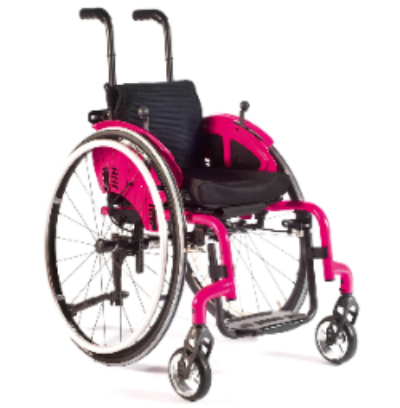
Tilt in Space Wheelchairs for Kids
Tilt in space tips the seating of the wheelchair backwards (imagine tipping a dining chair onto its back legs) and allows gravity to ‘push’ the upper body of the user against the backrest of the wheelchair. This enables a child with reduced sitting balance to maintain a sitting position, but with reduced muscular effort. Tilt in space also helps with pressure relief by re-distributing weight bearing from the cushion to the backrest. For users using a hoist to transfer to their wheelchair, tilt in space can make this transfer easier, allowing the angle of the seating to match that of the child in their hoisted position. For other users, tilt in space enables them to adjust their own position, using gravity to assist them slide back over the cushion.
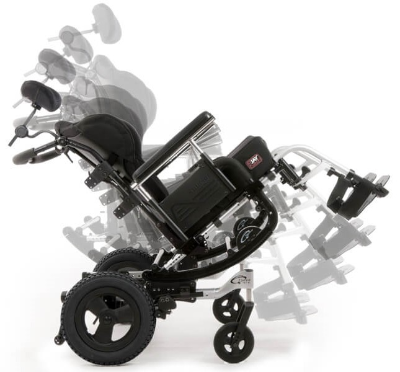
Powered Wheelchairs for Kids
Powerchairs have batteries and electric motors that remove the physical effort involved in self-propelling (or pushing from behind) a manual wheelchair. For those children who are unable to self-propel a manual wheelchair, a powerchair can be the difference between them being able to independently mobilise or not. Powerchairs are typically controlled with a joystick mounted on the armrest (as in the picture below), but other means are available such as a joystick mounted for use with the chin, foot or head. Switches of almost any shape and size can also be used instead of the joystick. A single switch is all that is necessary to control every function on the powerchair.
Some manual wheelchair users also benefit by having a powerchair. A powerchair will enable them to move faster and further, greater for when they’re wanting to keep up with others!
Powerchairs have their drawbacks though – they’re typically very big and heavy (100kg plus), so can’t be lifted into the back of a car. Many powerchair users have a wheelchair accessible van (WAV) that they’re able to drive into. Most powerchairs are crash tested, meaning the child is able to stay seated in the wheelchair when travelling in a vehicle.
Kerbs (or lack of dropped kerbs) can also be a problem. Most powerchairs have difficulty getting up anything more than a 3” kerb.
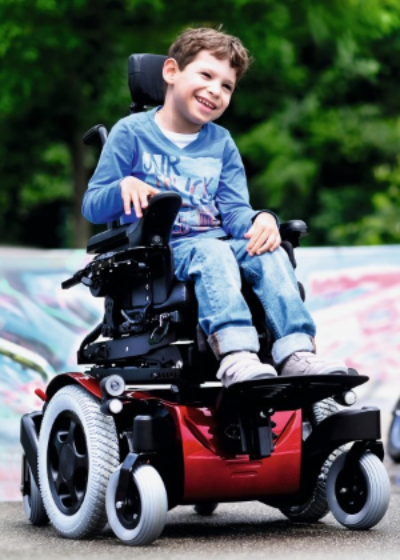
Accessories/Specialist Uses
There are loads of accessories available to pimp a wheelchair! The list is endless, but here a some of the more commonly requested options, just don’t expect to see these on the NHS list!
Manual wheelchairs can be turned into powered devices by adding a powered front wheel. This means the wheelchair can be used as a manual wheelchair indoors for example, and then the powered device can be fitted (less than a minute) when travelling outdoors.
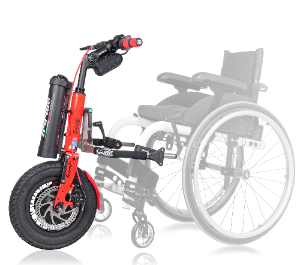
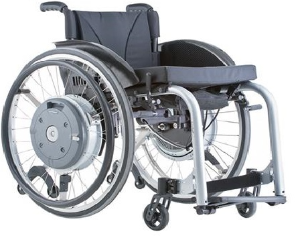
Other devices provide powered assistance to normal self-propelling, the motor and batteries being stored inside the wheel itself.
Other wheelchairs are made specifically for off-road use. Most of these tend to be powerchairs, but manual ones are available too. The trickiest terrain for almost any wheelchair is loose sand, but there are chairs designed specifically for that too, and they’re available to hire at some UK beaches.
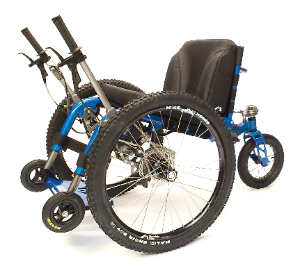
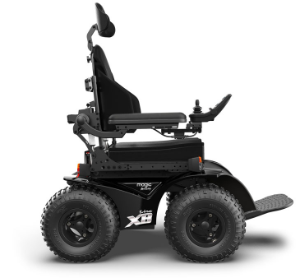
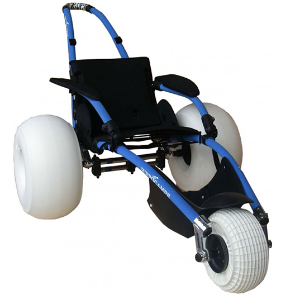
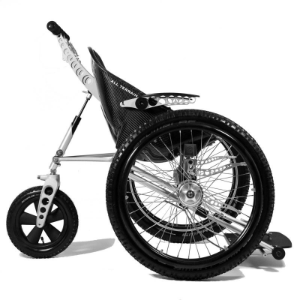
Kid’s Wheelchair Guidance from Silver Fern
If you’re struggling to work out where to start, drop us a line. We’re happy to offer advice over the phone. Alternatively, our website has information on our assessment process and what to expect from our involvement.